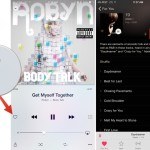Apple Music – Locking Customers In Through Network Effects

For almost 15 years the success of Apple’s devices and iTunes services has been primarily based on indirect network effects. Now the rapid growth of music streaming services shifts the focus towards direct network effects.
Without any doubt Apple’s decision to enter the music industry has been a huge success: It all started with the introduction of the first iPod in 2001, which was soon followed by the launch of the iTunes Store in 2003. The hardware lineup changed over the course of the last 15 years (iPod Classic/Mini/Nano/Shuffle/Touch), and the iTunes Store soon became the largest music vendor in the United States in April 2008. This year Apple has now introduced Apple Music, a music streaming service. At first sight this just seems like a natural evolution of their iTunes platform, but looking at this move from a network effect perspective, it reveals a very interesting transformation that is happening in this field:
For almost 15 years the success of Apple’s devices and iTunes services has been primarily based on indirect network effects. As the number of iPod and iTunes users grew, the number of available songs (respectively the number of cooperating music corporations), app developers, and equipment manufacturers increased. The iPod/iTunes ecosystem steadily grew in size and thus the resulting cross-group network effects put Apple in a strong position to capture a significant portion of the sales generated by songs from music corporations like Universal Music or Sony BMG. While, until recently, this model has been consistent and successful, Apple now seems to recognize that the nature of network effects in the music industry changes.
The rapid success of music streaming services showed Apple that the traditional business model of iTunes was not as stable as expected. Even though their model exhibited strong indirect network effects, Apple lost part of their market share to new entrants like Spotify. The success in this new music business was much stronger based on direct network effects. While the indirect network effects have been created by cross-group interaction (i.e. more users lead to better supply of songs/apps/etc., since the platform gets more attractive for suppliers), these direct network effects mean that more users of streaming services directly increase the value for other existing users. For Apple Music as well as for most of the other streaming platforms this happens in two distinct ways:
1) Recommendation systems based on user preferences: The value that is created by music streaming services heavily depends on playlist quality. The capability to tailor the service exactly to individual preferences and to suggest great music the user might like is probably the crucial component of these services. Machine Learning and other Data Analytics techniques help to create better recommendations, but rely on a large number of users, whose preferences are analyzed and combined with “similar” users. As a result, the value provided to a user directly increases with each additional user of the service.
quality. The capability to tailor the service exactly to individual preferences and to suggest great music the user might like is probably the crucial component of these services. Machine Learning and other Data Analytics techniques help to create better recommendations, but rely on a large number of users, whose preferences are analyzed and combined with “similar” users. As a result, the value provided to a user directly increases with each additional user of the service.
2) Social Network: One of the key success factors of the early Spotify business model was the interaction with social networks like Facebook. Users could share their favorite artists, explore playlists of their friends, and, as a result, friends of existing users could be attracted to the service as new users. This social component builds a larger ecosystem around the core streaming service and increases the platform’s lock-in effects.
 Looking at Apple’s strategic moves within the last years, it is obvious that they recognized the need to strengthen their direct network effects already a few years ago. In 2010 they launched Ping, a music-oriented social networking and recommender system. However, it never reached the tipping point and was officially closed only two years later. Now the release of Apple Music is their second attempt to introduce these strong direct network effects to the market and to finally create sufficient lock-in effects that keep users in their ecosystem. With “Connect” they launched a new social network and various features such as the “heart” option next to each song strengthen the social component of the service. Furthermore, their music recommendation system is embedded prominently on every iPhone and iTunes.
Looking at Apple’s strategic moves within the last years, it is obvious that they recognized the need to strengthen their direct network effects already a few years ago. In 2010 they launched Ping, a music-oriented social networking and recommender system. However, it never reached the tipping point and was officially closed only two years later. Now the release of Apple Music is their second attempt to introduce these strong direct network effects to the market and to finally create sufficient lock-in effects that keep users in their ecosystem. With “Connect” they launched a new social network and various features such as the “heart” option next to each song strengthen the social component of the service. Furthermore, their music recommendation system is embedded prominently on every iPhone and iTunes.
Was the design of a “social” Apple Music the right decision or will it be a second “Ping”?
Given the fact that their important iTunes Store was seriously threatened by declining sales, I think their decisions regarding Apple Music have been the right move. Not only is the music industry a very attractive market in terms of size/value, but music services also have the capability to create a much closer social connection with customers than Apple’s regular hardware sales do. However, with music content alone, it is very difficult for Apple to create sufficient lock-in effects, since the big music corporations are able to license their songs to many other services simultaneously. As a result, Apple has no control over the content supply (although that seems to change) and there’s an increased risk to be replaced by other competitors and new entrants (e.g. with a low-price strategy). A sharp focus on direct network effects is probably the only strategy to build a sustainable music streaming platform and the best opportunity for future growth.
The first Apple Music statistics show that this strategy seems to pay off.
Image Sources:
http://cdn.macrumors.com/article-new/2015/07/likingapplemusic-800×570.jpg
http://static.guim.co.uk/sys-images/Guardian/Pix/pictures/2012/9/17/1347907550515/ping-apple-networks-010.jpg
http://cdn.idigitaltimes.com/sites/idigitaltimes.com/files/2015/08/15/apple-music.png



Great piece. Apple Music is offering 3 months free to first-time subscribers. This is to lure new users to their platform and to increase the chances of them becoming paid customers. This will hopefully strengthen Apple Music’s user base, which would in turn add value to artists and record labels.
Agreed that Apple made a move in the right direction but the execution was remarkably un-Apple like. Lots of bugs and crashes were a big turnoff for the user base.
I am also doubtful if Apple’s strategy of leveraging its iPhone/Mac firepower to distribute Music automatically results in long term success. If that were the case, Apple Maps would have been the leader in Worldwide Maps. Historically, Apple’s software services tend to largely be failures (Ping, Maps, MobileMe etc). Apple Music is still not available for Android and its a very poor second compared to Spotify in terms of user experience anyway. I doubt that it will scale up and gain user traction like iTunes did with Windows.
Very interesting post. I myself am trying the Apple Music service and I am still on the fence wether to go with Spotify or Apple. I wonder about a couple of things:
1) It is true that network effects have a great impact in the sustainability of either of the two services. Nevertheless, Spotify was the first mover in this space and it already has a significant userbase with very high migration barriers (moving all your music from Spotify to Apple is too difficult or virtually impossible if you’re a heavy user).
2) Apple Music’s service still has a couple of bugs and somethings are not as seamless as one would want (e.g. moving from the U.S. iStore to anywhere else in the world could potentially cause massive losses of data). Will its brand name hold consumers and give them enough time to polish their functionality to provide a better service than Spotify?
Finally, I don’t have stats on this but I am sure that given the huge initial iTunes userbase (and credit card information) should trigger adoption in customers who were not affiliated to any streaming service, expanding the market. On the other hand, their product portfolio (no free ad-supported tier) should also make it easier to drive users to pay, whereas Spotify is having a really hard time convincing their free users to pay 9.99 for the premium service. I wonder if these two last attributes alone will allow Apple Music to reach their expected growth targets.
Just something on the last point. It is hard for me, personally, to see people sticking to Apple if Apple ever gets rid of the three month trial. I think it was a good idea, especially because people could still choose to do Spotify Free if they decide that Apple still lacks what they want. Or YouTube, or Pandora.
But that’s the crux of the problem. People are not picking between Apple Music and Spotify. They are choosing between listening to Spotify, Apple Music, Google Music (my preference is the free version since I already have a wide collection of music), Pandora, YouTube videos in the background, the radio apps on one’s phone, Google Music, iHeartRadio, and many other apps. I know people who shifted off of Sirius XM for YouTube and people who would only use YouTube if the audio did not shut off with the phone. It’s a big, complicated market where it is hard to make money. Even if Apple Music defeats Spotify/Rdio/etc., it still has to deal with the music ecosystem as a whole.
We will see what happens. In the meantime, Apple Music’s incompatibility with Android and Windows is still a deal breaker for me.